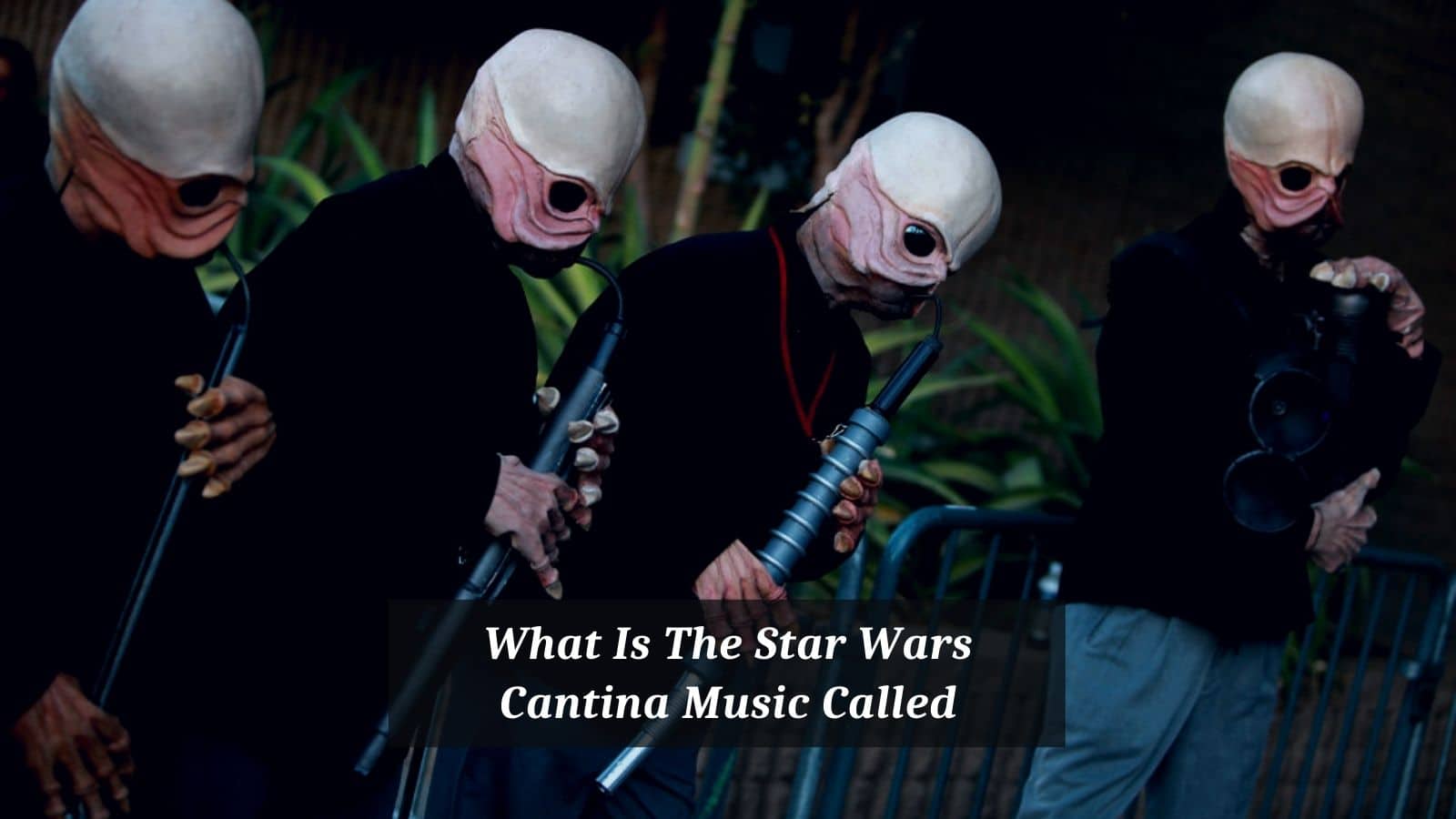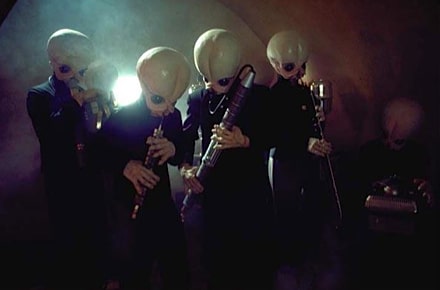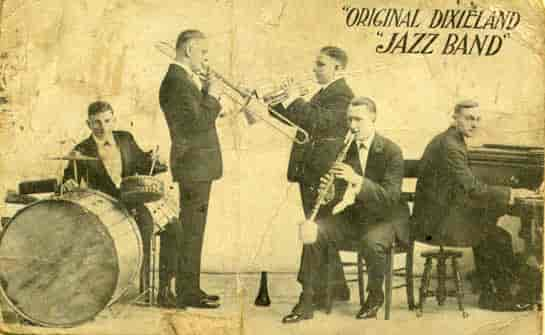
One of the ongoing joys of writing these articles is that I have the opportunity to learn something new. When I read this title, I could honestly say I had never heard of cantina music or a cantina band.
How it related to Star Wars was an equal mystery even though I am very familiar with that remarkable series of movies.
Whether you’re a devotee of Star Wars or not, I think it makes some sense to hear the music we’re about to explore to provide context.
The clip is taken from Star Wars IV: A New Hope (1977), a film that has become iconic and enduringly popular.
It was the collaboration between George Lucas (Director/Producer/Write), and composer John Williams that gave this film the winning edge and assured it a place in the hearts and minds of tens of thousands of film fans.
The diegetic music you hear in the clip was composed by Williams and serves as a significant departure from the epic orchestration of the Williams score.
Williams was directed to “imagine several creatures in a future century finding some 1930s Benny Goodman swing band music in a time capsule or under a rock someplace — and how they might attempt to interpret it…”
In William’s usual stroke of brilliance, he brought together a nine-piece jazz band with an added array of odd percussion instruments to give the track an alien sonority.
This scene is set in a dingy, low-lit tavern (the Mos Eisley cantina), on Tatooine (a fictional desert planet), where every imaginable kind of living creature comes to imbibe the strong drinks, enjoy the music, and on occasions launch into a vicious fight.
What you see in the scene is the melee of aliens and humans together with a band of alien musicians. This curious group of music makers is providing the backdrop to the clip.
You could be forgiven for imagining that these performing alien musicians were simply there actors but they were a real group of musicians called Figrin D’an and the Modal Nodes. (I love the name). They were the resident seven-piece band in this hostelry lead by Fiery Figrin D’an.
He played the Kloo Horn and the Gasan String Drum. The remaining members of the Modal Nodes were Nalan Cheel (Bandfill), Doikk Na’ts (Dorenian Beshniquel), Tedn Dahai (Fanfar), Tech M’or (Ommni box), Ickabel G’ont (Double Jocimer) and Sun’il Ei’de (drums).
The instruments they are playing a suitably exotic in the film but actually are instruments characteristic of a Dixieland Jazz Band.
Whilst a riverboat Dixieland band might not include drums the rest of the instruments broadly fits that of this kind of band. It is more than instrumentation that points to the genre of music. This track uses a distinctly jazzy swing rhythm and echoes songs from the 1920s.
If you listen carefully you’ll hear the lead instrument is a soprano saxophone. This is an instrument you don’t hear very often and sits comfortably at the high end of the family of saxophones with the tiny sopranino at the pinnacle.
Accompanied by drums, tuba, baritone saxophone, and occasionally an alto clarinet too. In some alternative band configurations there are additional brass instruments.
What Is The Star Wars Cantina Music Called
Even though the parallel to Jazz is undeniable, this music has adopted its a unique called Jizz. Even the genre clearly pays homage to Jazz. Jizz music, even has sub-genres including Jizz-Wail, Jizz Aubade and Jizz Glitz.
Figrin D’an and the Modal Nodes were not the only exponents of Jizz. Several other groups evolved including The Sozzenels, Bobolo Baker’s All-Bith Band, and Evar Orbus and His Galactic Jizz-Wailers.
The only audio I can uncover of Evar Orbus is here. Interestingly, this music is quite a departure from the jazz timbres of the 1920s. This track is a blend of rock and funk; energetic and with tempo altered vocals.
Where did the genre of Jizz originate? According to the many Fandom pages, Jizz as a name was initially used in The Return of The Jedi novelisation where a musician is described as a jizz-wailer.
Its official usage wasn’t until 1995 in a publication called Tales from the Mos Eisley Cantina. Jizz music has its own radio station as far as I can discover and an accompanying fan base that is not inconsiderable in size.
It’s not by accident that this style of jazz was brought into this scene. In a similar way that early jazz was used in the inspired musical Bugsy Malone, it is cleverly added in Star Wars.
Whether we are aware of it or not, when we hear this genre of music we tend to conjure images of speakeasys, sleazy underworld dives where mobsters preside over crooked businesses.
And this is not out of keeping to a historical truth. Music of this style probably was being played in these dubious venues and it has become an axiom for us ever since.
The choice of riverboat-style jazz with its characteristic instrumentation, rhythms, tempo, melody and harmonies matches and enhances the scene beautifully.
Even though the movie is set at some future point in time, it seems that creatures still hanker after venues where they can disappear into felonious watering hole and do as they wish.
Yes, the instruments shown being played in the movie are strange the music itself is not. Jizz, or jazz if you prefer is the ideal accompaniment to this scene.
There are two tracks that the cantina band play in Star Wars: A New Hope. The one I’ve focused on here is the song that is frequently played in a variety of different instrumentations and perhaps the most popular.
Its title is Mad About Me, or the Cantina Song. The second song has the title If Only I Could Let You Go and Cry.
Mad About Me became far more popular than either Williams or Lucas could have anticipated. It gave rise to a whole fanbase.
As a result, they decided to try a similar approach in Return Of The Jedi but the Max Rebo Band never reached the dizzy heights of success of Figrin D’an and the Modal Nodes.


